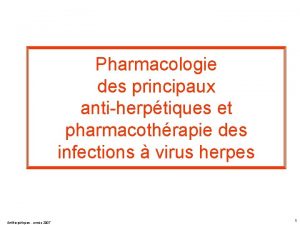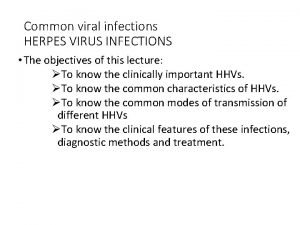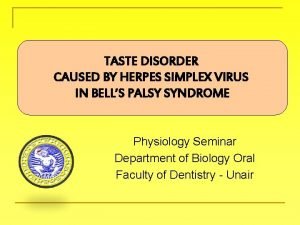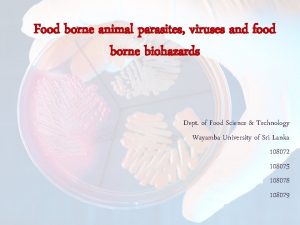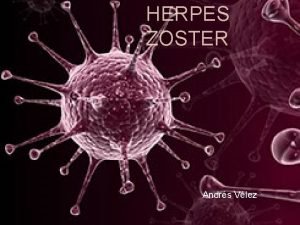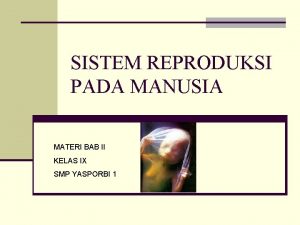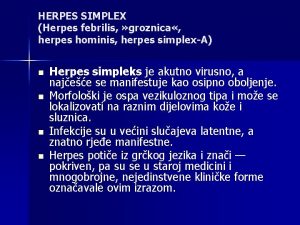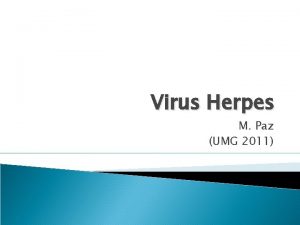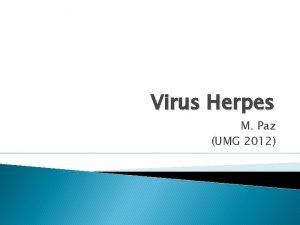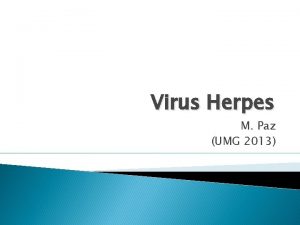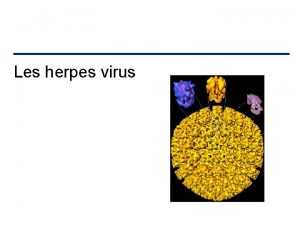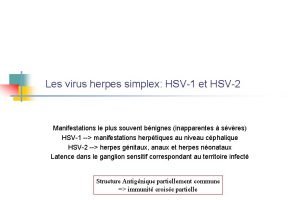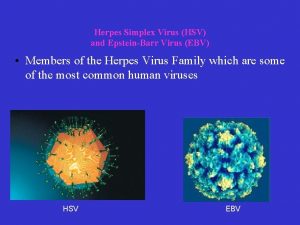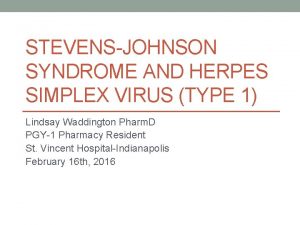Impact of Knowledge of Herpes Simplex Virus Type















- Slides: 15

Impact of Knowledge of Herpes Simplex Virus Type 2 Serostatus on STD Clinic Patients Karen A Kroeger 1, Richard C Knaup 2, Michael P Williams 2, Bradley P Stoner 1 1 Washington University School of Medicine 2 Department of Health, St Louis County, MO

Background and Objectives A type-specific serotest for herpes simplex virus-type 2 (HSV-2) is now commercially available n Impact of this test on patients has not been thoroughly evaluated n Goal of this study: to examine patient reactions to a positive serological test for HSV-2 n

Methods n n 500 consecutive STD clinic patients tested for HSV-2 antibody using MRL-EIA test (Department of Health, St. Louis County, MO) Patients with positive results notified and counseled by phone; if no previous clinical hx, permission requested to contact for later interview Follow up interviews within two weeks 15 minute phone interview regarding psychosocial and behavioral impact of test

Participation 500 people tested n 197 (39. 4%) tested positive for HSV-2 Ab n 135 (68. 5%) positives notified and counseled n 105 (77. 8%) of those notified agreed to be interviewed n 43 (41. 0%) of those who agreed to interview completed an interview n

Interview sample (N=43) n n n Gender – Female – Male Age – Range – Mean – Median Ethnicity – African-American – White 60. 5% 39. 5% 17 -55 yrs 30 yrs 25 yrs 81. 6% 18. 4%

Interview sample n Partners last 6 months – 1 or less – 2 -4 – 5 or more n n Previous hx of STD Use condoms “none of the time” % 59. 5 31. 0 9. 5 66. 7 35. 7

Reactions to Diagnosis (N=43) % Important to know I have herpes Surprised to find out Worry about infecting others Worry about rejection Worry about effect on sex life Hard to believe I have herpes Worry about effect on health Afraid it will be difficult to live with *female 73. 1% vs. male 41. 1%, p<. 05 100. 0 90. 7 81. 4 69. 7 67. 4 60. 5* 32. 6

How likely are you to talk about your diagnosis with someone else in your life? “Highly likely” or “pretty likely” to talk with: – Close friend – Parent – Family member – Other % 44. 2 38. 0 27. 9 23. 2

How likely are you to talk about your diagnosis with sex partners? “Highly likely”or “pretty likely” to talk with: – – – n All current partners 40 Current main only, not secondary 37 Current secondary, not main 28 Most recent past partner 34 Other past partners 40 None of my current partners 9. 5 % 65. 0 64. 8 35. 7 50. 0 22. 5 42

How easy or how difficult do you think it will be to talk about your diagnosis with sex partners? (N=43) “Extremely difficult” or “pretty difficult”to talk with: New sex partners % 69. 7 Current sex partners 39. 0

Likelihood of Behavior Change % Use condoms more often 86. 0 Have fewer new sex partners 78. 0 Tell partners before having sex 60. 0 Use condoms, but not disclose 39. 0 Attend support group/emotional 23. 3 Attend support group/find partner 11. 6

Recall of Prior Symptoms n No previous symptoms recalled % 76. 2 n Retrospective recall of symptoms 16. 7 n Suspected herpes/did not seek care (i. e. “cold sores, itching, blisters”) 7. 1

Discussion Notification/counseling for asymptomatic patients was complex and labor intensive n Low response rate/small sample size limits generalizability of findings and may obscure significant gender and other differences n STD programs must anticipate additional workload if implementing HSV testing n

Conclusions Patients feel it is important to know they have HSV-2, but may feel surprise and disbelief at their diagnosis n Most patients say they will use condoms more frequently n Many other patients say they will use condoms to protect partners but not disclose diagnosis n

Conclusions Most patients recall no symptoms n More research is needed to assess the impact of diagnosis with HSV-2 and to develop appropriate counseling messages n More research is needed to assess the long term impact of a diagnosis with HSV-2 n
 Hsv encephalitis
Hsv encephalitis Herpes simplex virus
Herpes simplex virus Herpes simplex virus 2
Herpes simplex virus 2 Aciclovir varicela copii
Aciclovir varicela copii Keratoconjunctivitis
Keratoconjunctivitis Herpes simplex facialis
Herpes simplex facialis Herpes virus classification
Herpes virus classification Fasciolopsiasis
Fasciolopsiasis National knowledge commission conclusion
National knowledge commission conclusion Herpes og graviditet
Herpes og graviditet Historia del herpes
Historia del herpes Herpes zoster clasificacion
Herpes zoster clasificacion Herpes simpleksserotipe 2
Herpes simpleksserotipe 2 Herpes simpleksserotipe 2
Herpes simpleksserotipe 2 Tempat untuk memproduksi ovum
Tempat untuk memproduksi ovum Corrimento de gravidez
Corrimento de gravidez

